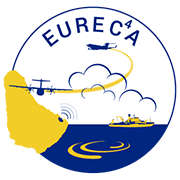31 Jan
Well you know we spend most of our time trying to figure out how cloudy it is; when the real mystery of the world might be what makes blue skies over the ocean. Okay not in the sense of Rayleigh, but in the sense of a cloud free days on Barbados, or anywhere over the tropical ocean. Last year Aude Untersee (a visiting intern from the ENS) was looking at what was different about the boundary layer between cloudy and clear days. Only then did we realize that on Barbados there is no such thing as a clear day, or almost no such thing. Aude searched and searched and found two days as I remember, right after another, that were clear, at about this time last year. They looked a lot like the satellite image attached (A1) which I got from GOES 16. I always thought it was just that Aude, being a sail plane pilot had an affinity for clouds, but after she left, still we had no days where the skies were blue, or the net solar radiation (A2) traced a line following the sun, rather than having the familiar variability that accompanies cloudy skies. (Kind of cool how locally the solar radiation can be 200 W/m^2 larger than it would be if there were not atmosphere.)
Well the clear-skies did not reach Barbados, we were downwind on a fish. Maybe this is also not a coincidence as one thing about fish and flowers, is that they are often offset by unusually large areas of really cloud free skies, this likely being indicative of the strength of the mesoscale circulations in which they form. But is it really just a question of anomalous subsidence (which perhaps is also responsible for the cross wind bands in the cloud area to the north of the clearing), or are surface fluxes and slackening winds also important. Surely there is a Phd in there somewhere.
Speaking of blue skies, it reminds me of something Kerry was suggesting to Sandrine and I when we were discussing plans for EUREC4A… fly where there are no clouds.

